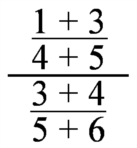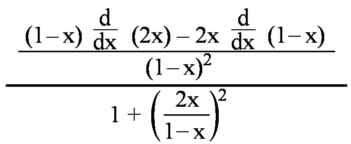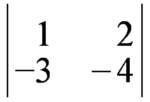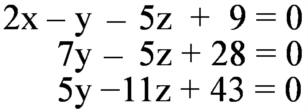Nemeth Code Rules
RULE II--NUMERIC SIGNS AND SYMBOLS
Approximately 97% of the examples are correct with the default MathSpeak settings.
The following examples are known to be incorrect:
- Section 11 b Example 1 - the border is not being indicated.
- Section 11 b Example 2 - the border is not being indicated.
- Section 11 b Example 3 - not rendered.
Numeric Indicator #
Arabic Digits (Nemeth Code)
- 00
- 11
- 22
- 33
- 44
- 55
- 66
- 77
- 88
- 99
- American,
- Continental,
- American.
- Continental.
§7. Representation of Arabic Numerals:
a. Digits are represented in two ways: as in English Braille, and as in Nemeth Code. The digits in English Braille are represented by the letters "j" and "a" through "i". The digits in the Nemeth Code are represented by the symbols whose configurations correspond to these same letters, but which occupy the lower portion of the braille cell.
b. Even when a work is transcribed in the Nemeth Code, when at all practical or appropriate, all numerals on title pages must be transcribed as in English Braille. Numerals at the corners of pages and at the ends of page-separation lines must also be transcribed as in English Braille. English Braille numerals must be used when the technique of "keying" (§187) is employed. In all other cases, including contents pages, forewords, page references, footnotes, indices, and bibliographies, the numerals of the Nemeth Code must be used.
§8. Comma, Decimal Point:
a. The transcriber should be alert to the possibility that variant forms of the comma and decimal point are sometimes employed, particularly in books published outside of the United States. Although the ink print signs for the comma and decimal point differ from
those used in the United States, this difference is not reflected in the braille transcription. However, a transcriber's note should be included at the beginning of the book to inform the reader of the continental usage in the ink-print edition.
b. The comma, American or Continental, which is interior to a numeral, and which is used to partition the numeral into short regular segments, must be regarded as a numeric symbol. As such, the comma is subject to the rules for transcribing numerals.
c. The decimal point, American or Continental, should be regarded as a numeric symbol only when it is associated with a numeral. An omission symbol must not be regarded as a numeric symbol. As a numeric symbol, the decimal point is subject to the rules for transcribing numerals.
§9. Use of the Numeric Indicator: The numeric indicator must be used to introduce one or more unspaced numeric symbols under the following circumstances:
a. The numeric indicator must be used at the beginning of a braille line or after a space. It must also be used after a minus symbol which occurs at the beginning of a braille line or which follows a space. For exceptions, see §11.

?3333#
#4+5
,?333333,#
#3+4
?3333#
#5+6
|
verbose semantics |
StartStartFraction
StartFraction
1 plus 3 Over
4 plus 5 EndFraction
OverOver
StartFraction
3 plus 4 Over
5 plus 6 EndFraction
EndEndFraction
|

|

(1-x)?33#(2x)-2x?33#(1-x)
dx dx
,?3333333333333333333333333,#
(1-x)^2
,,?33333333333333333333333333333,,#
#2x
#1+(?3333#)^2
#1-x
b. The numeric indicator must be used after a punctuation mark. However, the hyphen requires special attention (see section f below). It must also be used after a minus symbol which follows a punctuation mark.
c. The numeric indicator must be used after a left grouping symbol which introduces a determinant or matrix. It must also be used after a minus symbol which follows such a grouping symbol.

,\-#3 -#4,\
|
verbose semantics |
Start 2 By 2 Determinant
1st Row
1st Column
1 2nd Column
2 2nd Row
1st Column
minus 3 2nd Column
minus 4 EndDeterminant
|

|

,\ ?33#,\
,\ #2 ,\
,\ ,\
,\ #1 #1 ,\
,\?33# ?33#,\
,\ #2 #4 ,\
|
verbose semantics |
Start 2 By 2 Determinant
1st Row
1
one-half 2nd Row
one-half
one-fourth EndDeterminant
|

|
d. The numeric indicator must be used after a section mark, paragraph mark, crosshatch, or asterisk. It must also be used after the general reference indicator or any reference symbol.
e. The numeric indicator must be used after any of the type-form indicators, or after making a transition from non-regular to regular type within the same numeral. It must also be used after the interior shape-modification indicator.
f. The numeric indicator must be used after a hyphen when the hyphen follows a word, an abbreviation, or a mark of punctuation. However, also see §11d.
g. The numeric indicator must be used after the opening transcriber's grouping symbol.
§10. Definition of "Enclosed List":
An "enclosed list", for the purpose of this Code, must meet the following requirements:

|
verbose semantics |
left-parenthesis one-fourth comma one-half plus x comma three-fourths plus x squared right-parenthesis |

|

|
verbose semantics |
left-parenthesis x apostrophe s comma y apostrophe s comma z apostrophe s right-parenthesis |

|


|
verbose semantics |
left-parenthesis x plus 1 comma x plus 2 comma question-mark comma question-mark comma x plus 5 right-parenthesis |

|

|
verbose semantics |
left-parenthesis a equals 1 comma b equals 2 comma c equals negative 4 right-parenthesis |

|
§11. Non-Use of the Numeric Indicator: It must not be assumed that because a symbol is numeric that the numeric indicator must be used with that symbol. The numeric indicator must not be used preceding a numeric symbol under the following circumstances:
a. The numeric indicator must not be used at the beginning of an item which is part of an "enclosed list" as defined in §10 above, even if such an item has been run over to another line. However, if any item in an "enclosed list" is a numeral in a type form other than regular type, that item requires the numeric indicator.


10, 11, 12)
|
verbose semantics |
StartLayout
1st Row
left-parenthesis 1 comma 2 comma 3 comma 4 comma 5 comma 6 comma 7 comma 8 comma 9 comma
2nd Row
10 comma 11 comma 12 right-parenthesis
EndLayout
|

|
b. The numeric indicator must not be used in work arranged in columns and aligned for addition, subtraction, multiplication, division, or alignment of a system of equations.

@*34
333333
|
verbose semantics |
StartLayout
1st Row
1st Column
Blank
2nd Column
4 3rd Column
2 4th Column
6
2nd Row
1st Column
times 2nd Column
Blank
3rd Column
3 4th Column
4
EndLayout
|

|

7y- 5z+28 .k 0
5y-11z-43 .k 0
c. The numeric indicator must not be used after a space if the purpose of the space is to partition a numeral into segments.

,millions ,?\s&s ,"os or ,units
|
verbose semantics |
StartLayout
1st Row
1st Column
947 comma 2nd Column
147 comma 3rd Column
592
2nd Row
1st Column
Millions 2nd Column
Thousands 3rd Column
Ones or Units
EndLayout
|

|
d. The numeric indicator must not be used after a hyphen if the hyphen follows a numeral, a letter, or other mathematical expression.
e. The numeric indicator must not be used in any situation not covered in §§9 and 11.

"-7
|
verbose semantics |
a x cubed plus b x squared y plus c x y squared plus d y cubed plus e x squared plus y squared minus 7 |

|
§12. Long Numerals: Long numerals that cannot be completely accommodated on one braille line may be divided and run over to another line. Such a division must be made after a comma, if present, and a hyphen must be supplied. The numeric indicator must be used as the first braille symbol of the braille line to which the numeral has been run over.
§13. Representation of Numerals to Non-Decimal Bases:
a. When a system of numeration is to a base other than 10, a common technique for providing additional digits is to use letters, either lower-case or capitalized, in addition to the ten Arabic digits. When this technique is used, the transcriber must use only lower-case letters. If capitalized letters are used in ink print, the transcriber must indicate this fact in a transcriber's note.
b. Another common technique for providing additional digits is to use standard or arbitrary signs to supplement the ten Arabic digits. Authors sometimes give names to these signs. For example, &dek; (dek) represents 10 and ⪙ (el) represents 11. In this case, the transcriber must devise one-cell symbols for these signs, preferably chosen from among the letters of the English alphabet, and must insert a transcriber's note to specify the meanings which have been assigned to these symbols. The transcriber's note must include a drawing of any sign for which there is no equivalent symbol in the Code.

c. Another common technique is to use an arbitrary set of signs which do not include Arabic digits. In this case, the transcriber must proceed as in b above.

d. The one-cell symbols which the transcriber uses to represent the digits of a non-decimal numeration system must be regarded as numeric symbols. As such, these numeric symbols are subject to the rules for transcribing numerals.


§14. Ordinal Endings: (See §55d.)
§15. Plural and Possessive Endings: (See §39.)
§16. Numerals in Diagrams: In diagrams which contain numeric labels, the numeric indicator must be used. The space to accommodate the numeric indicator may often be gained by a sufficient enlargement of the diagram.
§17. Numerals in Table Entries: In tables whose entries consist entirely of numerals, the numeric indicator must be omitted. However, in tables whose entries are a mixture of words, numerals, letters, or other mathematical signs, the numeric indicator must be used. This rule applies only to the body of a table and not to the headings. Determinants and matrices are not to be regarded as tables. The minus symbol is not numeric so that, if it occurs in a table, the numeric indicator must be used throughout the table.
§18. Roman Numerals:
a. Capitalized Roman numerals must be transcribed using the single capital sign before one letter and the double capital sign before more than one letter. For the use of the English-letter indicator with Roman numerals, see §28c.

|
verbose semantics |
Upper
I comma UpperWord
I I comma UpperWord
I I I comma UpperWord
I V comma Upper
V period |

|

;,d, ;,m >e ! symbols we use
5write ,roman num]als4
|
verbose semantics |
The letters Upper
I comma Upper
V comma Upper
X comma Upper
L comma Upper
C comma Upper
D comma Upper
M are the symbols we use to write Roman numerals period |

|

.k ,i+(,,ii+,,iii)
|
verbose semantics |
left-parenthesis Upper
I plus UpperWord
I I right-parenthesis plus UpperWord
I I I equals Upper
I plus left-parenthesis UpperWord
I I plus UpperWord
I I I right-parenthesis |

|

,,xi-,,xv_4
|
verbose semantics |
Read chapters Upper
I hyphen Upper
V and UpperWord
X I hyphen UpperWord
X V period |

|

(,i)
(,,ii)

;,i_4
,,ii_4
|
verbose semantics |
StartLayout
1st Row
1st Column
1 point 2nd Column
Blank
2nd Row
1st Column
Blank
2nd Column
Upper
I period
3rd Row
1st Column
Blank
2nd Column
UpperWord
I I period
EndLayout
|

|
b. When a roman numeral consists of one or more lower-case letters it must be treated as though it were a "single letter" and, as such, the English-letter indicator must be used or not used in accordance with the rules governing the English-letter indicator (see §§26-28).

(i)
(ii)

;i_4
;ii_4
|
verbose semantics |
StartLayout
1st Row
1st Column
1 point 2nd Column
Blank
2nd Row
1st Column
Blank
2nd Column
i period
3rd Row
1st Column
Blank
2nd Column
ii period
EndLayout
|

|
c. When it is questionable that a letter combination is a Roman numeral, treat the combination as if it is not a Roman numeral.


d. For punctuation of Roman numerals, see §37, iii.
§19. Spacing with Numerals: Spaces within numerals must be left when it is necessary to partition a numeral into short regular segments, or to achieve alignment. (For examples see §11b and c.)






































































































